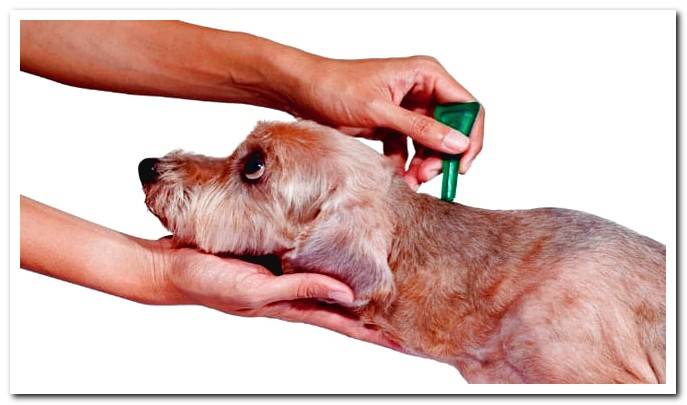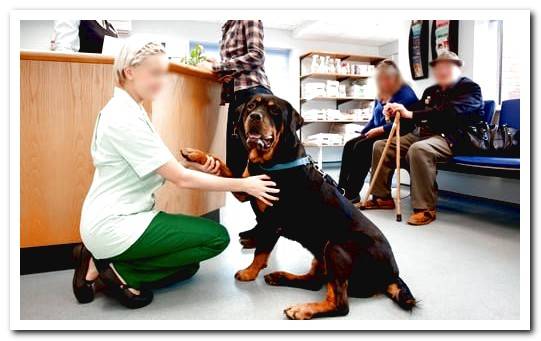
Pipette poisoning is a common problem when using this method to resolve a flea or tick infestation in a dog. Despite their ease of use and their great effectiveness, it is possible that your dog develops some type of reaction.
Depending on the case, allergies or side effects produced by the administration of this product can put your furry friend at risk. Below, we show you the symptoms you need to know to react in time.
- You may also like: How to make natural pipettes for dogs
Index of contents
- 1 Pipette allergy in dogs
- 2 What if my dog licks the pipette?
- 3 Symptoms of pipette poisoning
- 4 Treatment for pipette poisoning
- 5 I put the pipette on my dog and he keeps scratching
Pipette allergy in dogs
What is this flea and tick product made of? Although the components vary according to the brand, most pipettes contain permethrin, a pyrethroid that is lethal to external parasites and some insects.
Are pipettes toxic? No, for most dogs, permethrin is 100 times more toxic to parasites than to mammals. However, some may have an allergy to this component, at which time different symptoms of poisoning are triggered.
Before pipetting, it is almost impossible to determine if your dog will have an allergic reaction. You can make sure with your vet about the most suitable brands according to their size and age.

What if my dog licks the pipette?
The main way that pipette poisoning occurs is when the dog licks the area during the hours following its administration.
Another factor to keep in mind is that many commercial brands distribute different pipette presentations according to the size of the dog, that is, if it is a dwarf, medina, large or giant breed. Administer a pipette unsuitable for your dog’s size It is usually another reason for allergic reactions.
In addition, if there is a wound on the skin, the chemical components of the product will be absorbed and assimilated by the body more quickly, producing the effect of poisoning. Similarly, it is necessary to carefully read the instructions of the product before administering it.
In any of these cases, do not allow your dog to lick his coat at least in the 12 hours following the pipetting. To avoid this, you can wear it with a T-shirt that covers the areas impregnated with the product.
Symptoms of pipette poisoning
An allergic reaction by pipette produces different side effects. No dog manifests them all, but several of these do occur:
- Uncontrollable tremors
- Diarrhea
- Vomiting
- Ptialism (excessive salivation)
- Loss of control of the sphincters
- Rash
- Trouble breathing
- Suffocation
- Nervous behavior
- Dilation of the pupils
- Cramps
- Tingling in the body
- Seizures
These reactions appear within a few minutes of administering the pipette or in the following hours. After a day, there are usually no signs of poisoning.

Treatment for pipette poisoning
The most important thing is to go to the vet as soon as we notice any abnormal reaction. Likewise, remember to stay calm and take the container of the used product with you, in this way the specialist will be able to review its components and determine the steps to follow when faced with pipette poisoning in dogs.
In addition to this, avoid:
- Force the dog to drink milk or oil. The effectiveness of these foods in case of poisoning is a myth and they could accelerate the absorption of dangerous components.
- Don’t bathe your dog. Although you can remove part of the pipette by tapping it lightly with an adsorbent towel or cloth, bathing the dog will only help spread the chemicals throughout his body.
- Don’t ignore the symptoms. With immediate attention, your dog will recover soon; however, ignoring their reactions could kill you.
I put the pipette on my dog and he keeps scratching
Some dogs start scratching frantically right after receiving the pipette. If this is not accompanied by other symptoms, the possibility of poisoning is ruled out, since scratching is due to a slight tickling that some commercial brands produce.
At other times, pipettes do not produce the expected effect. The most common reason for this is to use the wrong product according to the size of your dog. Once this option has been ruled out, it is also possible that your dog scratches not by parasites such as fleas and ticks, but by scabies or some skin disease.
